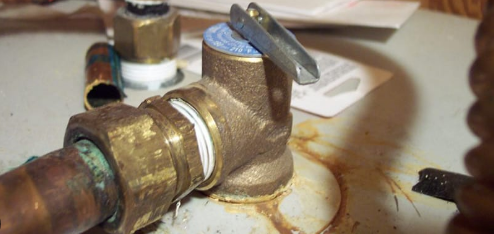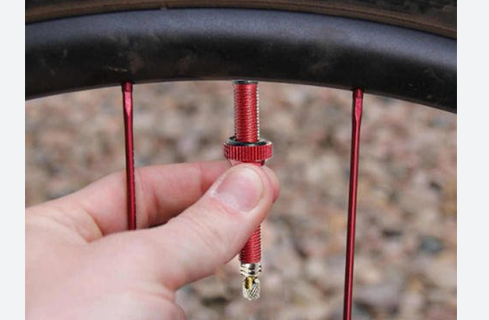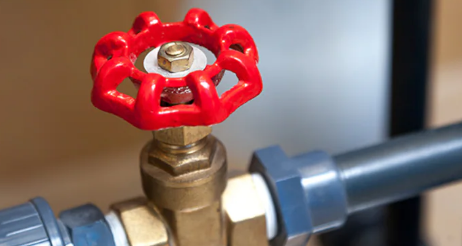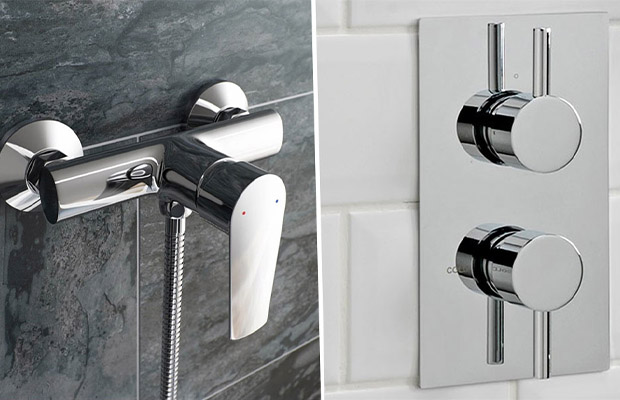
When it comes to your showering routine, the shower valve is crucial. Although water may originate from the showerhead, the shower valve regulates the temperature and pressure of the water to provide a relaxing showering experience.
Your shower valve determines whether the temperature of the water in the shower rises to scalding levels after a toilet is flushed or stays the same. There are different types of shower values. How to choose?
In this article, I’ll ensure that you have a basic understanding of the various shower valve types, their features and advantages, and how to avoid the most typical pitfalls.
Table of Contents
What Is A Shower Valve?
The internal component of the wall known as the shower valve controls the flow, temperature, and output of water to the showerhead, tub spout, and other shower accessories. As a supporting player in managing the water flow and temperature, the cartridge in the valve connects it to the external trim handles.
Different Types Of Shower Valves
Mixing Valves
The mixing valve is a classic style of shower valve that draws water from both the hot and cold taps to the shower head. Mixing valves are more common in older homes and less common in more recent constructions.
Showering individuals run the risk of being scalded if a sink, toilet, or washer unexpectedly draws cold water due to the inability of mixing valves to control sudden changes in water pressure.
Reducing the water heater thermostat to 120 degrees Fahrenheit can help prevent scalds in a house with mixing valves.
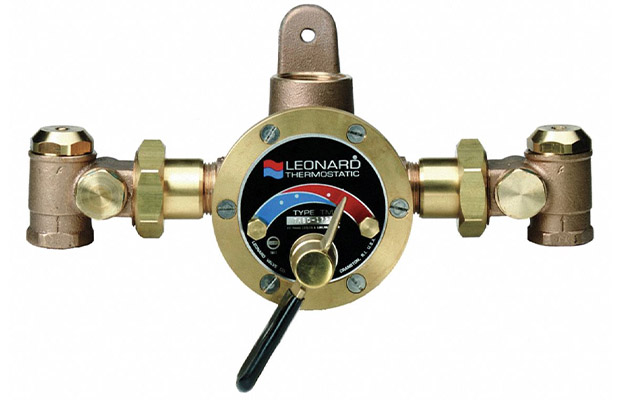
Thermostatic Valves
Thermostatic valves are made to maintain both water pressure and temperature. A thermosensitive component in the thermostatic valve mechanism regulates the flow of hot or cold water in response to temperature changes. The water temperature can frequently be adjusted using a dial found on thermostatic valves.
Although more expensive than pressure balancing valves, thermostatic valves are another common type of shower valve.
The volume control feature of a thermostatic shower valve allows users to adjust how much water flows out of each water outlet.
Diverter Valves
Diverter valves allow a bathroom to have a tub shower combo by directing water from a bathtub to the necessary shower components. Shower diverter valves come in three different varieties.
- A pull arm on a tap, usually the bathtub faucet, makes up a tee diverter. The user pulls the arm to block the tap when the water reaches the desired temperature, and the diverter valve directs the flow to the shower.
- With a two-valve diverter, water is diverted between the tub and the shower using one control that rotates between hot and cold settings.
- With a central knob to direct water between the tub and the shower and three separate valves for cold and hot water, a three-valve diverter allows for individual cold and hot water adjustments.
Pressure Balancing Valves
The most typical kinds of shower valves are pressure balancing valves, also known as mechanical or anti-scald valves. In order to prevent the shower from getting too hot, pressure-balancing valves are used to adjust the water pressure. To balance the hot and cold water supplies, the mechanism has pistons or diaphragms that can move in response to changes in water pressure. These are capable of maintaining the water’s temperature within a range of 2-3 degrees Fahrenheit.
The majority of pressure-balancing valves have a handle and single control. When the valve is turned to the left or right, the water gets warmer or colder.
Advice: The plumbing in some older homes may not be strong enough to support pressure-balancing valves.
Read More: Pressure Balance Valve Vs. Thermostatic Shower Valves
Transfer Valves
Without turning off the main shower, transfer valves let water flow to multiple outlets, like a handheld shower head. Multiple components can be used simultaneously by some transfer valves.
The majority of certification and code organizations for plumbing have anti-scald standards for plumbing fixtures that regulate the water temperature in showers. Understanding the various shower valve types can help your home stay within code and provide flow control to make your showers as comfortable as possible.
Also Read: Air Admittance Valve
Shower Faucet Vs. Shower Valve
A shower’s visible faucet handles and controls, including the showerhead and occasionally the tub spout, are referred to as a shower faucet. The visible components of your shower that you use every day are the faucets and the controls that go with them, which are referred to as shower trim. Most shower valves are hidden from view, in contrast to shower trim.
The majority of the time, shower valves are sold separately from shower trim and accessories. Not all shower trim sets include valves.
The shower faucets (also known as the shower trim) and the shower valve must be produced by the same company and be the appropriate complements to each other in order for them to fit properly and function as intended because they work in tandem.
Best Shower Valve Manufacturers
Here are some of the most reputable manufacturers of shower valves now that you are aware of their differences.
Kohler – a well-known brand of brass valves with durability. A product of high quality might cost more, but it will last longer. Particularly popular are the pressure-balancing valves from Kohler.
Moen – Moen valves are well-known for their thermostatic valves and digital shower panels. They are strong and made of high-quality materials.
Delta – a producer of shower valves that are more reasonably priced and simple to install. There are many different Delta trims and cartridges available, and Delta is well known for its multi-option universal shower valve.
The majority of reliable valve manufacturers provide limited lifetime warranties.
Do You Need A Shower Valve?
Before spending too much time researching the various shower valve types, this is a crucial question to ask. Make sure a shower valve is even required for your project. Two situations that you ordinarily wouldn’t have to think about come to mind.
- The same wall-mounted valve will remain there, according to the plumber. I would caution you in that situation. Make sure that he (or she; I know some fierce female plumbers too!) checks the valve to see if it is a pressure-balancing shower valve.) and changes it out to bring the shower up to code. Determine the brand and valve name so you can find the appropriate shower trim to go with it if it complies with the code and you decide to keep it.
- The valve will be supplied by the plumber. Some plumbers will install one without even asking you because they have preferred valves. Confirm the brand and valve name if this is the case and you are comfortable with it so you can obtain the compatible trim (which I’ll discuss later), just as you did in the previous situation.
Factors To Consider When Exploring Types Of Shower Valves
Number Of Valve Ports
Do you intend to install a walk-in shower or a tub/shower combination? Given that there are 3- and 4-port shower valves, knowing this is crucial. One port will be for hot water, one for cold water and one port will be for the shower head on a three-port valve. In addition, a four-port valve will have a port that leads down to the tub spout.
Just keep in mind that if you only need three ports on a valve, a plumber can always cap the fourth port, but if you only supply three ports, he won’t be able to add a fourth port. Therefore, be aware of your needs before purchasing one of the shower valve types.
Check/Service Stops
Service stops on shower valves are not required but are undoubtedly useful, particularly if you live in an apartment or condo.
They enable you to repair the valve without having to turn off the main water supply by allowing you to turn off the water to the valve. This could mean that, if you live in a building with many other residents, you would have to turn off the water supply to the entire structure or floor before you could fix your valve, which would require approval from the building’s superintendent, which would take some time. With these check stops, you can work on the valve even if you only live in a single-family home without turning off the water to your washer…you get the point.
I believe they are worthwhile upgrades for the small price premium. They may determine whether your valve is repaired in a few hours or a few days.
Pitfalls To Avoid
Not All Trims Contain Valves
The same is true for shower trim kits; they come in a variety of types just like shower valves. Therefore, you shouldn’t assume that you will receive a trim or vice versa just because you purchase a valve.
Even though Home Depot and Lowes, for instance, sell kits that feature the valve and complementary trim, this is more of an exception than the rule. These big-box store sets are frequently made very shoddily with plastic parts and don’t offer much in the way of showerhead functionality.
Hey, I appreciate Home Depot just as much as the next guy, but I just wanted to let you know that the standard material quality there isn’t very good.
The valve and trims kits are typically sold separately when you shop online or in showrooms, especially when you buy from reputable name brands.
Once more, all you have to do is double-check the product specifications to find out exactly what is included and purchase the trim kit that matches the valve model and brand.
Not All Trims Contain Accessories
Additional accessories that you will need for your shower remodel are as follows:
- Shower Head
- Shower Arm & Flange
- Tub Spout (If you have a tub/shower)
Of course, since these items are typically absent from these sets, you might want to add them. Examples include a slide bar and body sprays. Typically, purchasing all of the parts as a set saves you money and ensures that your products work together without any problems. The downside is that there are fewer options when you look for a “complete” set.
As opposed to the rough-in shower valve topic that we are covering here, I’ve written a previous article on this subject that delves deeper into the fashion plumbing side.
Valve-trim Compatibility
To put it simply, any shower trim from the past won’t work with any kind of shower valve. The trim, which you can see and touch and which operates the valve inside the wall, is the decorative escutcheon plate and handle. Shower valves and trims must be compatible with each other, just like Mercedes-Benz parts shouldn’t be used on a Toyota.
Additionally, it goes one step further. Even the shower valves themselves vary among brands like Moen and Kohler, requiring particular trims for each. So you cannot just assume that “oh, Any Moen trim kit will work with the Moen valve I have.” Before choosing your trim kit, you must know the valve type and brand name.
Caring For Your Shower Valve!
How To Make Your Valve Last
Shower valves produced by reliable companies are made to last a very long time. Use your shower frequently to keep them in top condition. A shower that is used frequently won’t deteriorate as quickly as one that is rarely used.
Installing a water conditioner when remodeling or replacing your water heater will extend the life of your shower valves by softening the water that flows through them, preventing scale and hard water buildup.
When To Replace Your Shower Cartridge
Inner cartridges in mixing valves and pressure balancing valves can become worn out over time. Scale and hard water buildup in PB valves can also cause the spool inside the cartridge to become stuck.
When you primarily get hot or cold water, this may be a sign that the mixing mechanism in your PB valve cartridge needs to be replaced. When the water stops flowing, that is another sign that the cartridge has failed.
Thermostatic valve cartridges may eventually need to be replaced as well.
Because of the way they are made, TS valves are prone to having debris or dirt collect in the check valves that regulate the flow of water from the hot and cold water taps. Check and clear the check valves as directed by the manufacturer if the water volume or temperature is uneven or out of balance. Replace the cartridge if that doesn’t work.
Keep your manufacturer’s manuals handy so you always know where to look for troubleshooting advice.
When In Doubt, Seek Professional Assistance!
Don’t be afraid to contact a plumber if you have any questions about installing a new shower valve or replacing an existing one. Plumbing can be challenging, and mistakes can be expensive to correct. To avoid regret and increased costs later, it is preferable to ask a professional to do it right the first time.
More about Values:

